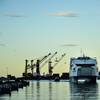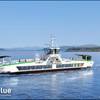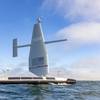Jeamar Winches, known for heavy-duty hand and power winches, has made a major push into the custom arena with built-to-order products.
Besides its major focus on the marine industry with rugged seaworthy capstan, power and hand winches, Jeamar has evolved into a true cross-industry provider. A look at its customer list reveals everything from aerospace to steel, grain-handling, railroads, power generation, pharmaceuticals and the theatre. And while Jeamar is largely known as a Canadian manufacturer, its client base spans the globe.
Among its most recent projects, Jeamar has engineered:
• A 32,000 lb. gate winch for a major U.S. dam.
• A 20,000 lb. lifting winch for a ship loading conveyor.
• A 30,000 lb. pulling winch for a dry-dock application, and
• Two 32,000 lb. synchronized lifting winches for a steel mill
But few of its accomplishments compares to the successful completion and installation of a mammoth rail-car puller, which was custom designed and manufactured as part of an international effort to build a sulfur refining facility in the Kazakhstan region of the former Soviet Union. The winch is integral to an equipment package designed to load bulk sulfur into railcars at the refinery. Included with the winch are portable conveyors, a belt feeder hopper and a dust-suppression system.
The Jeamar electric-powered winch is used to free up shunting engines at the site and reduce the fuel and maintenance required by the locomotives. To take the place of the locomotives, the winch had to be engineered to pull as many as 10, fully loaded, 70-ton-capacity railcars at one time through the sulphur-loading facility, stopping and starting the unit as each car is filled.
Jeamar was asked to design the winch to pull the string of cars over a distance of 250 ft., with the individual cars indexed every 12 minutes. Increasing the challenge, Jeamar was told to allow for rolling stock and track conditions that were clearly in need of repair.
In addition, the winch would be fixed to a single pivot point and must be able to self-adjust to correct for fleet angle. After pulling the cars through the loading facility, the rope and hook had to be spooled out to repeat the process with another string of cars.
Jeamar was also tapped to propose a solution to spool out the more than 600 lbs. of cable and hook - a task that simple labor could not accomplish.
"We knew we had a challenge on our hands," recalls Jeamar sales manager for special products, Chuck McClelland. "The toughest part was making decisions based on educated guesses.
Jeamar's solution was a massive electric winch that develops a line pull of 47,000 lbs., able to wind in the 250-ft. rope at 10 ft./min. A clutch, installed on the winch, converts it quickly from pulling to free spooling, and a special rubber boot was designed to protect the clutch from fine sulfur dust.
The toughest challenge - to allow a winch the size of an average compact car to pivot - was met with a specially engineered skid base, securely anchored, but able to slide from side to side as fleet angle changed.
To pay out the rope, a second 3,500-lb. electric hauling winch was designed to be mounted at the rail-car attachment point. With a much lighter rope weight, its sole function is to drag the line and hook from the main winch.
From initial drawings, through assembly and test, to final shipment of the winch, Jeamar was asked to complete the job in 10 weeks. When the product left the Jeamar assembly plant on schedule, its dimensions measured 10 x 8 x 6-ft. (3 x 2.4 x 1.8-m), with a gross shipping weight of 14,000 lbs.
March 2025
 Read the Magazine
Read the Magazine

 Read the Magazine
Read the Magazine
This issue sponsored by:

Top Business Risks for Marine and Shipping in 2025
Subscribe for
Maritime Reporter E-News
Maritime Reporter E-News is the maritime industry's largest circulation and most authoritative ENews Service, delivered to your Email five times per week









